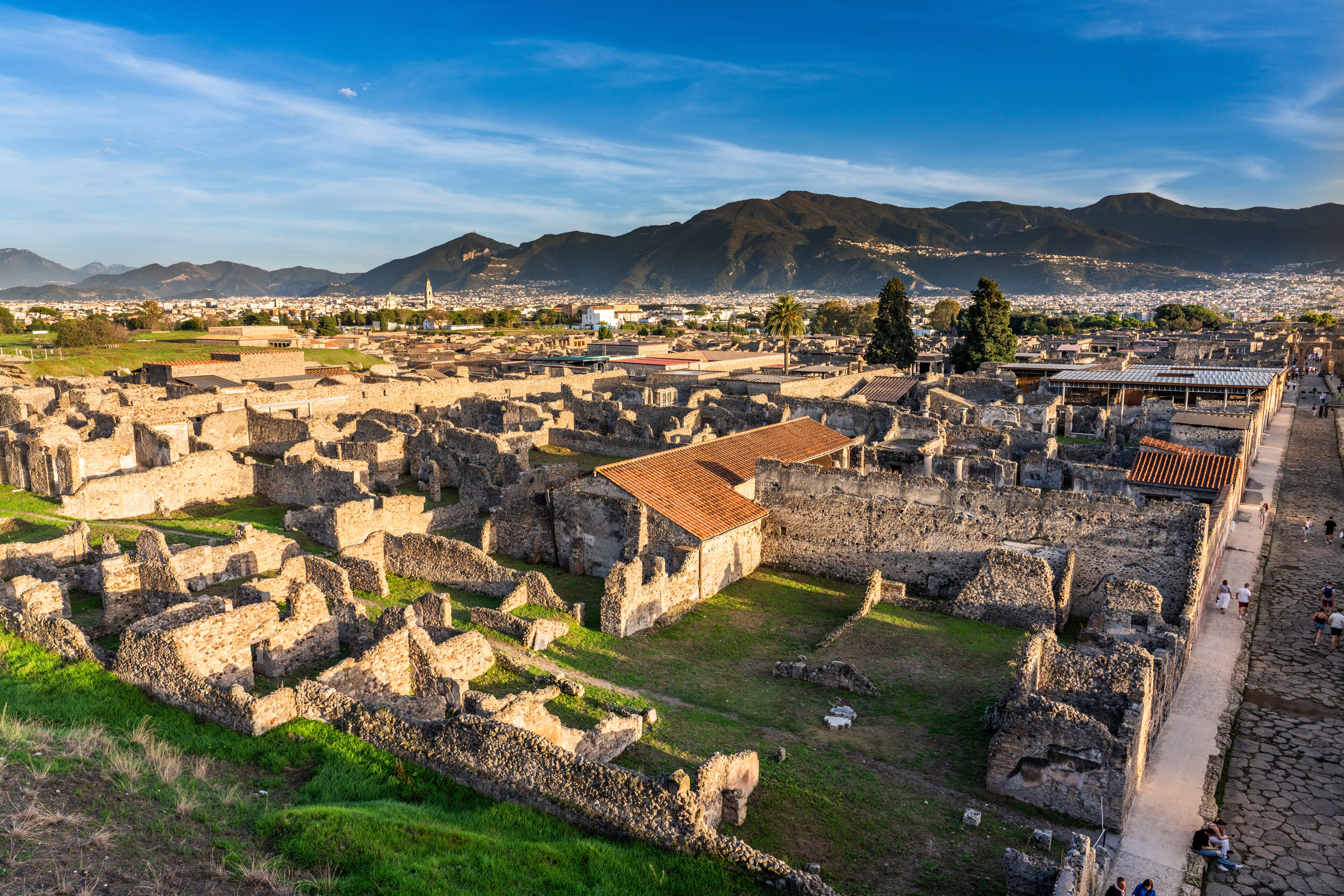Key Sites in Region 7

-
Forum
The Forum was the heart of daily life in Pompeii, serving as the city's main public square. The Forum was the centre for administration, justice, business, and worship. Originally, it was just a plain space with clay ground, facing Apollo's Sanctuary on one side and shops on the other.
But as time passed, around the 3rd and 2nd centuries BC, it underwent a major transformation. It became grander, with covered walkways and a floor made of tuff slabs. Later, in the Imperial age, they upgraded it further with travertine slabs.
Although the Forum saw changes and adornments, many precious items were taken long ago. Still, today, the Temple of Jupiter stands proudly at its centre, facing Mount Vesuvius. Excavations began in 1813, revealing more about Pompeii's vibrant past.
-
Sanctuary of Apollo
One of the oldest temples in Pompeii, the Sanctuary of Apollo, dates back to the 6th century BC. It was strategically located near the Marina Gate, leading to the city's core. The temple underwent major renovations between the 3rd and 2nd centuries BC, resulting in the structure seen today.
It featured a temple on a high base, a surrounding portico, and an altar in the courtyard. Excavations revealed various artifacts, including bronze statues of Apollo and Diana. The site was excavated multiple times, starting in 1816 and as recently as 2015.
-
Temple of Jupiter
The Temple of Jupiter stood tall on the north side of the Forum, with Mount Vesuvius behind it. When Pompeii became a Roman colony in 80 BC, they made the temple look like Rome's Capitolium. It held statues of Jupiter, Juno, and Minerva.
It featured a rich mosaic floor and underground favissae for offerings. The temple was a symbol of Roman power and religious devotion. Excavations occurred in 1810, 1816, and 1820.
-
Forum Baths
The Forum Baths, built around 80 BC, were behind the Temple of Jupiter. Men and women had separate areas. There were rooms for different temperature baths: a dressing room, medium temperature, cold, and hot baths.
The baths were decorated nicely with statues and plasterwork. An earthquake damaged them in 62 AD, and they were being fixed when Vesuvius erupted.
These baths were more than just a place to get clean; they were also a popular place to hang out and chat with friends. The baths were excavated in 1823-1824.
-
Suburban Baths
The Suburban Baths, located near the Marina Gate, were private baths built in the 1st century BC. Unlike other public baths, they featured erotic paintings in the changing room and sumptuous decorations throughout. A small cold pool with a mosaic-adorned fake cave and a heated large pool with a bronze brazier were among the highlights. Excavations were carried out between 1960 and 1988.
-
Temple of Genius Augusti (Temple of Vespasian)
Mamia, a priestess, had the temple built in the early 1st century AD. It honored the Genius of Augustus. It featured a courtyard, an altar, and a small temple with four columns.
The marble decoration, including floral motifs, was likely inspired by the Ara Pacis in Rome. The temple's construction was not fully completed due to the eruption of Vesuvius. Excavations were conducted in 1817.
-
House of Sirico
The House of Sirico was a grand residence formed by merging two houses. Owned by Publius Vedius Siricus, a prominent political and trade figure, the house featured lavish decorations and an exedra for feasting.
One notable find was a bronze seal bearing Siricus's name and an inscription welcoming guests. The house was undergoing renovations at the time of the eruption. Excavations occurred between 1851 and 1873.
-
Forum Granary
Located on the western side of the Forum, the Forum Granary served as a market for fruits and vegetables. Today, it houses over 9,000 artifacts from Pompeii, including terracotta pots, amphorae, marble tables, and even casts of victims from the eruption. It was built after the earthquake of 62 AD and likely not completed by the eruption. Excavations were carried out from 1816 to 1822.
-
Lupanar
The Lupanar was Pompeii's main brothel, where prostitutes, mostly slaves, provided services. It featured small rooms with built-in beds and erotic paintings on the walls.
The building had two floors, with the upper floor housing the owner and slaves. The term "Lupanar" comes from "lupa," meaning prostitute. Excavations took place in 1862.